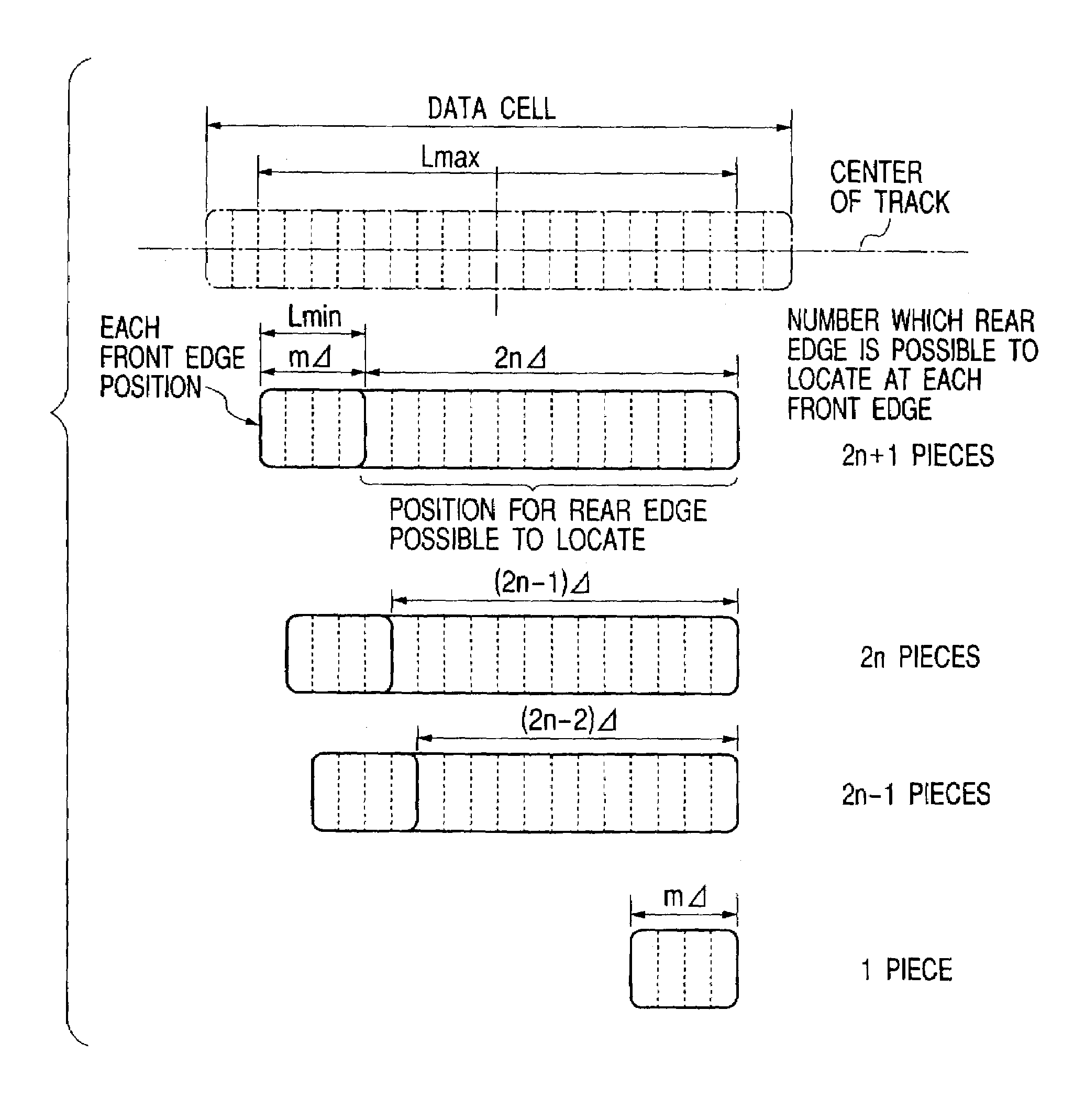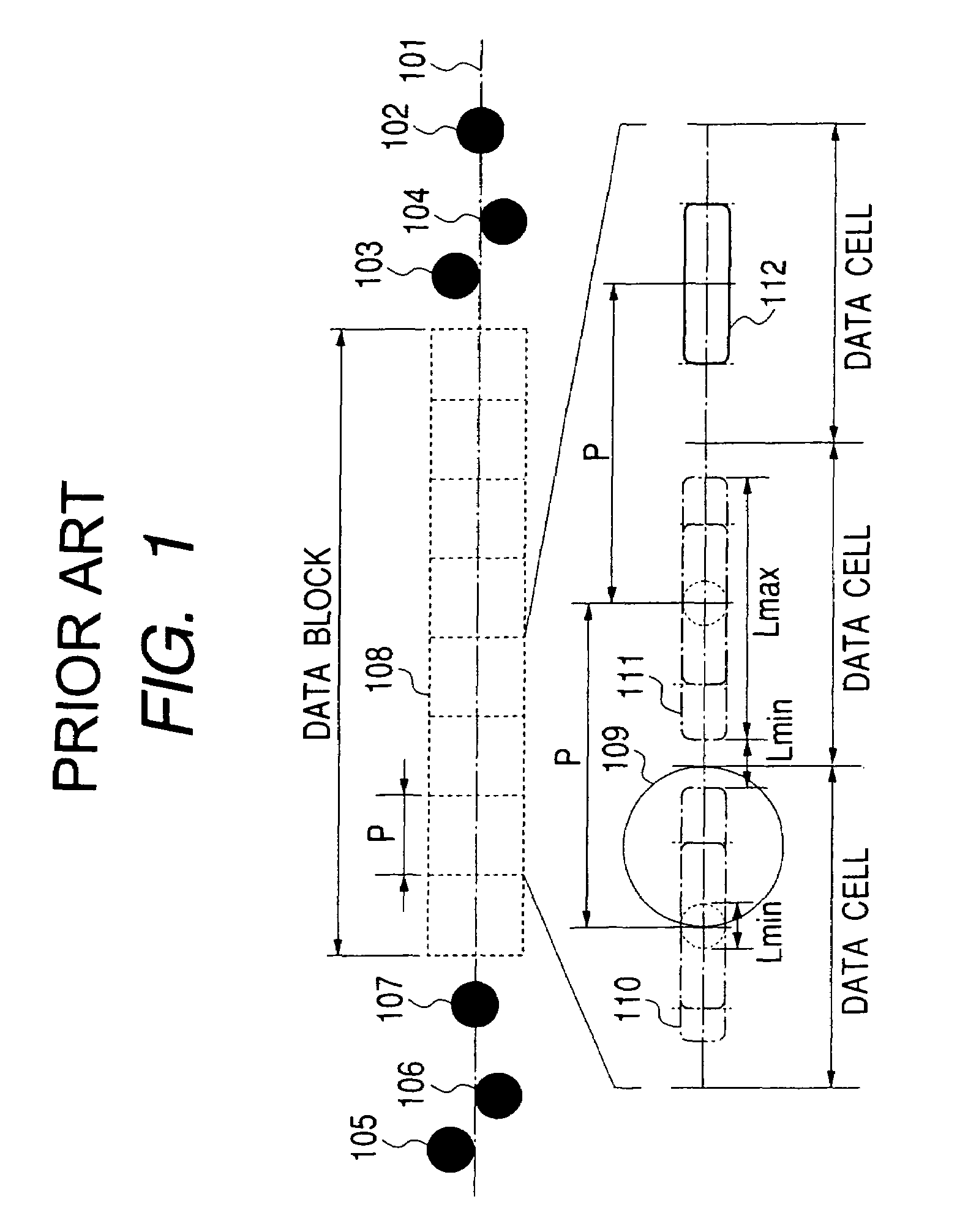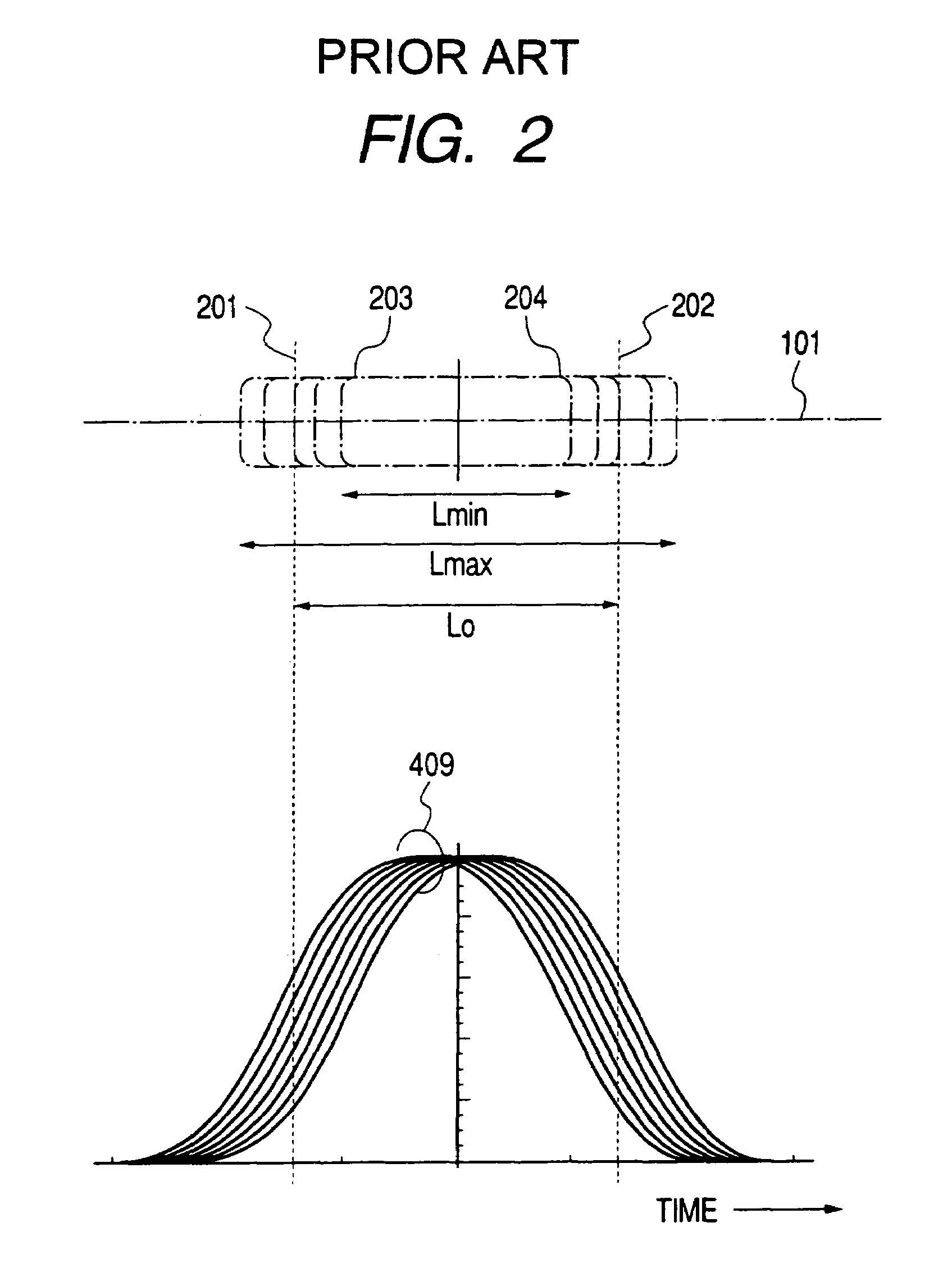Information media, recording and reading apparatus
- Summary
- Abstract
- Description
- Claims
- Application Information
AI Technical Summary
Benefits of technology
Problems solved by technology
Method used
Image
Examples
Embodiment Construction
[0071]The present invention will be hereafter described by way of embodiments with reference made to the attached drawings, in which like reference numerals identify similar functional elements.
[0072]A first embodiment of the invention will be described by referring to FIGS. 6 to 13. FIG. 6 shows a block diagram of an optical information recording and reading apparatus according to the invention.
[0073]Light emitted by a semiconductor laser 420 is collimated into parallel light by a collimator lens 421. The parallel light passes through a polarized beam splitter 422 and further through a ¼-wavelength plate 423, whereby the linear polarized light is converted into circular polarized light. The circular polarized light is focused on a rotating disk recording medium 427 by an object lens 425, forming a minute spot thereon. Light reflected by the recording medium 427 passes through the object lens 425 again and further through the ¼-wavelength plate 423, whereby the light is converted in...
PUM
 Login to View More
Login to View More Abstract
Description
Claims
Application Information
 Login to View More
Login to View More - R&D
- Intellectual Property
- Life Sciences
- Materials
- Tech Scout
- Unparalleled Data Quality
- Higher Quality Content
- 60% Fewer Hallucinations
Browse by: Latest US Patents, China's latest patents, Technical Efficacy Thesaurus, Application Domain, Technology Topic, Popular Technical Reports.
© 2025 PatSnap. All rights reserved.Legal|Privacy policy|Modern Slavery Act Transparency Statement|Sitemap|About US| Contact US: help@patsnap.com



